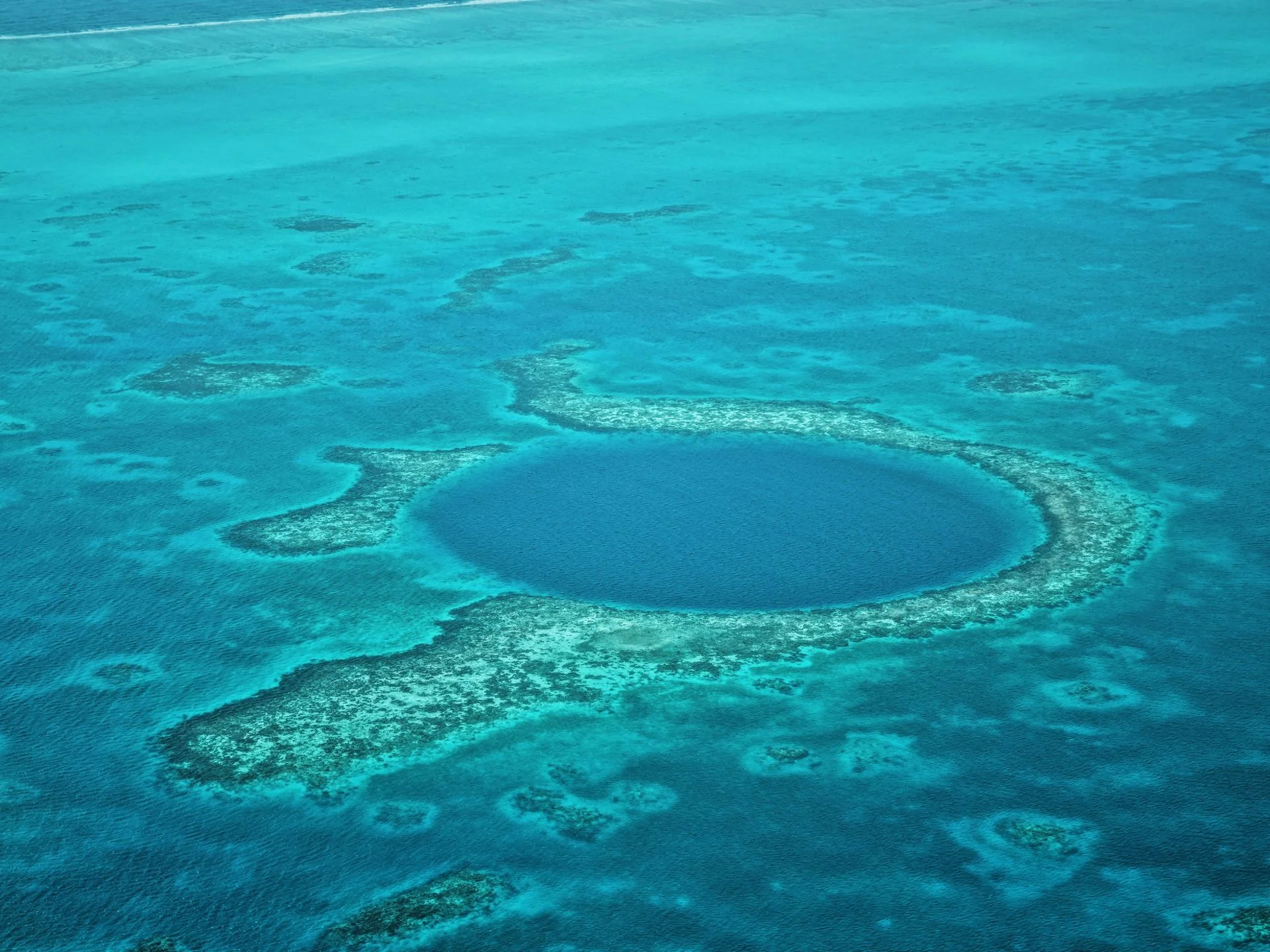Scuba Diving in Belize
The Ultimate Guide
Straddling the Caribbean and Central America, Belize is home to the world’s second‑largest barrier reef and a string of offshore atolls. Warm, clear water and a relaxed tropical vibe make it a favourite with divers of all levels. The flagship attraction is the Great Blue Hole, a 300‑m‑wide limestone sinkhole plunging to 124 m, but Belize’s real magic lies in its walls and coral gardens. Turneffe Atoll and Lighthouse Reef teem with reef sharks, turtles, eagle rays and massive barrel sponges. Gladden Spit hosts whale sharks from April to June, while Hol Chan Marine Reserve and Shark Ray Alley offer easy snorkelling with nurse sharks and stingrays. Whether you’re a beginner completing your first course or an experienced diver chasing pelagics, Belize delivers with friendly people and laid‑back island life.
Difficulty
Moderate
Temperature
26–29°C
Visibility
12–30 m

Diving Highlights
Best Months to Dive
Getting to Belize for Diving
✈️Transportation
Most visitors fly into Philip S. W. Goldson International Airport (BZE) near Belize City.
From there, short domestic flights or ferries connect to Ambergris Caye (San Pedro) and Caye Caulker, the main bases for day boats to the Blue Hole, Turneffe Atoll and Lighthouse Reef.
Liveaboards depart from Belize City and offer week‑long itineraries encompassing Lighthouse Reef and Turneffe.
Many resorts on the atolls arrange transfers for guests.
US, Canadian and many European nationals do not require a visa for stays under 30 days.
Country
Belize
Currency
Belize Dollar (BZD)
Electricity
110V/220V, 60Hz,US/UK plugs
Cost of a Dive Trip in Belize
Day Trip
Dive Resort
Liveaboard
Meal
Accommodation
Best Dive Sites in Belize
🐠Great Blue Hole
This UNESCO World Heritage site is a perfectly circular sinkhole 300 m across and 124 m deep. Advanced divers descend to the first ledge at 30–40 m to see stalactites and encounter reef sharks cruising in the clear blue. The scale of the hole, viewed from above, is breathtaking.
🐢Half Moon Caye Wall
Located in Lighthouse Reef, this wall plunges into abyssal blue and is covered with gorgonians, black coral and colourful sponges. Reef sharks, eagle rays and turtles cruise along the drop‑off, while the shallow terrace hosts schools of chromis and butterflyfish.
🦈The Elbow (Turneffe Atoll)
At the southern tip of Turneffe Atoll, The Elbow is known for powerful currents and big‑fish action. Large schools of horse‑eye jacks, snappers and barracuda swirl above the slope, while reef sharks and occasional hammerheads patrol the blue. This is a signature drift dive for experienced divers.
🐙Long Caye Wall (Lighthouse Reef)
A spectacular wall dive with dramatic buttresses and swim‑throughs. Sponges and soft corals cascade down the slope, and reef sharks, groupers and eagle rays are common. Keep an eye out for Caribbean reef squid and schools of creole wrasse.
🐚Hol Chan Marine Reserve & Shark Ray Alley
Near Ambergris Caye, this marine park offers easy snorkelling and shallow diving with abundant marine life. In the channel you’ll encounter nurse sharks, southern stingrays and schools of snappers and grunts. Nearby seagrass beds host manatees and turtles.
What Divers Say About Diving in Belize
Alex Thompson
Marine Biologis / DivemasterBelize offers the quintessential Caribbean dive holiday. 🏝️ Mornings are spent dropping into gin‑clear water over coral walls encrusted with purple sea fans and orange sponges. Nurse sharks and eagle rays glide past and curious reef sharks patrol the blue. On one day you might descend into the eerie, stalactite‑lined Great Blue Hole; on another you’re lazily finning through Hol Chan with nurse sharks brushing your fins. Surface intervals mean swaying in a hammock with a Belikin beer or exploring Mayan ruins on the mainland. It’s friendly, easy diving with plenty of wow factor.
Frequently Asked Questions About Diving in Belize
When is the best time to dive in Belize?
April–June offers peak visibility and whale shark encounters at Gladden Spit. December–March is the dry season with cooler water and calm seas, while the rainy season still offers good offshore diving with fewer crowds.
What marine life can I see?
Expect reef sharks, nurse sharks, turtles, eagle rays and stingrays on most dives. Whale sharks gather near Gladden Spit from April to June, and Gladden Spit is famous for this spectacle. You’ll also see colourful reef fish, groupers and the occasional manatee.
Is Belize suitable for beginners?
Yes. Many sites have gentle currents and shallow depths ideal for training. The Blue Hole and some walls are advanced due to depth, but there are numerous easy dives around Ambergris Caye and Turneffe.
How many dive sites are there?
Belize’s barrier reef and atolls offer hundreds of sites. The most visited areas include Lighthouse Reef (Half Moon Caye Wall, Long Caye Wall), Turneffe Atoll (The Elbow, Chasbo’s Corner) and Ambergris Caye (Tres Cocos, Hol Chan). Gladden Spit is the place for whale shark encounters.
Do I need a visa to visit Belize?
Citizens of the US, Canada, the EU and many other countries receive a 30‑day visa on arrival. Check current requirements before traveling.